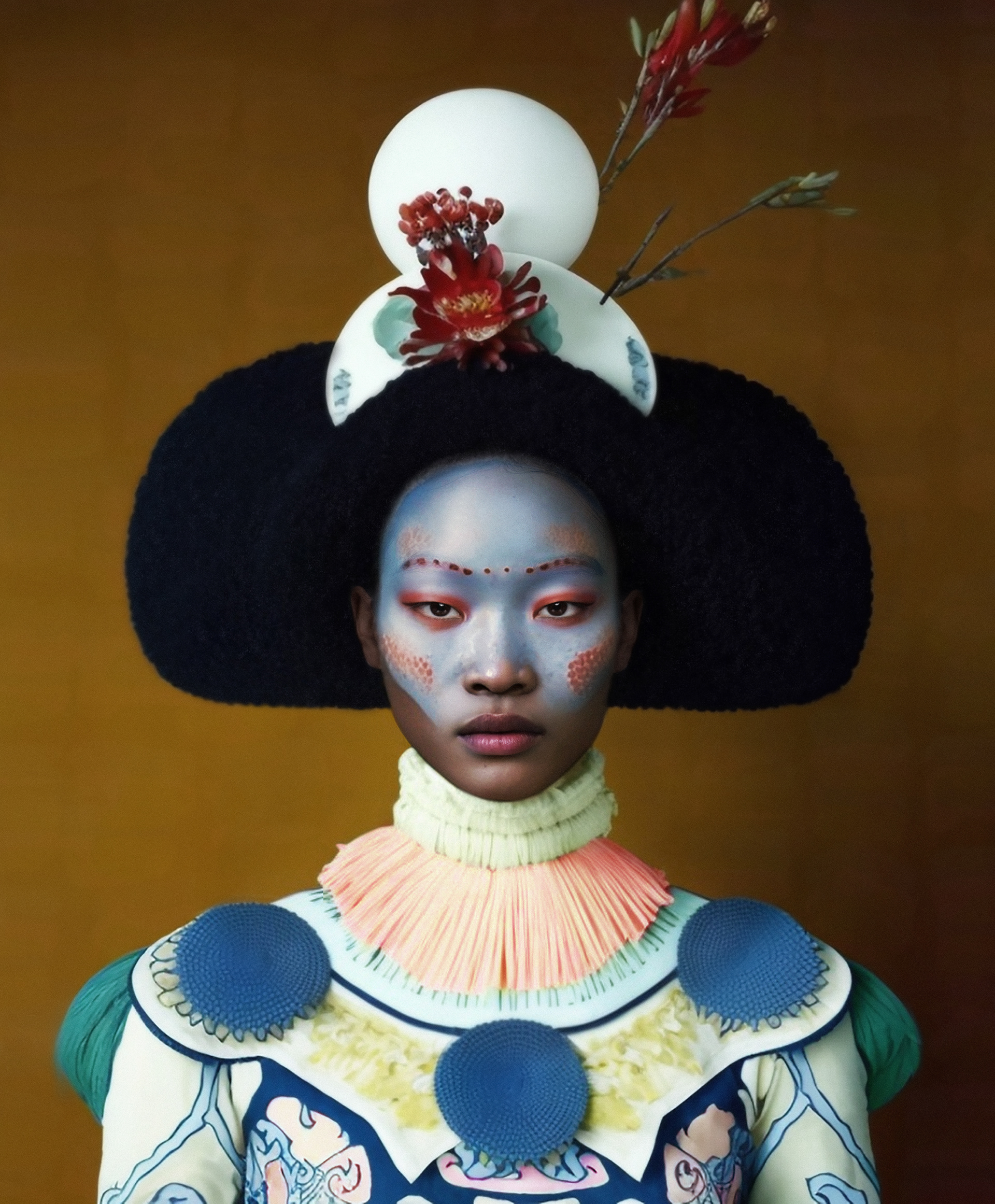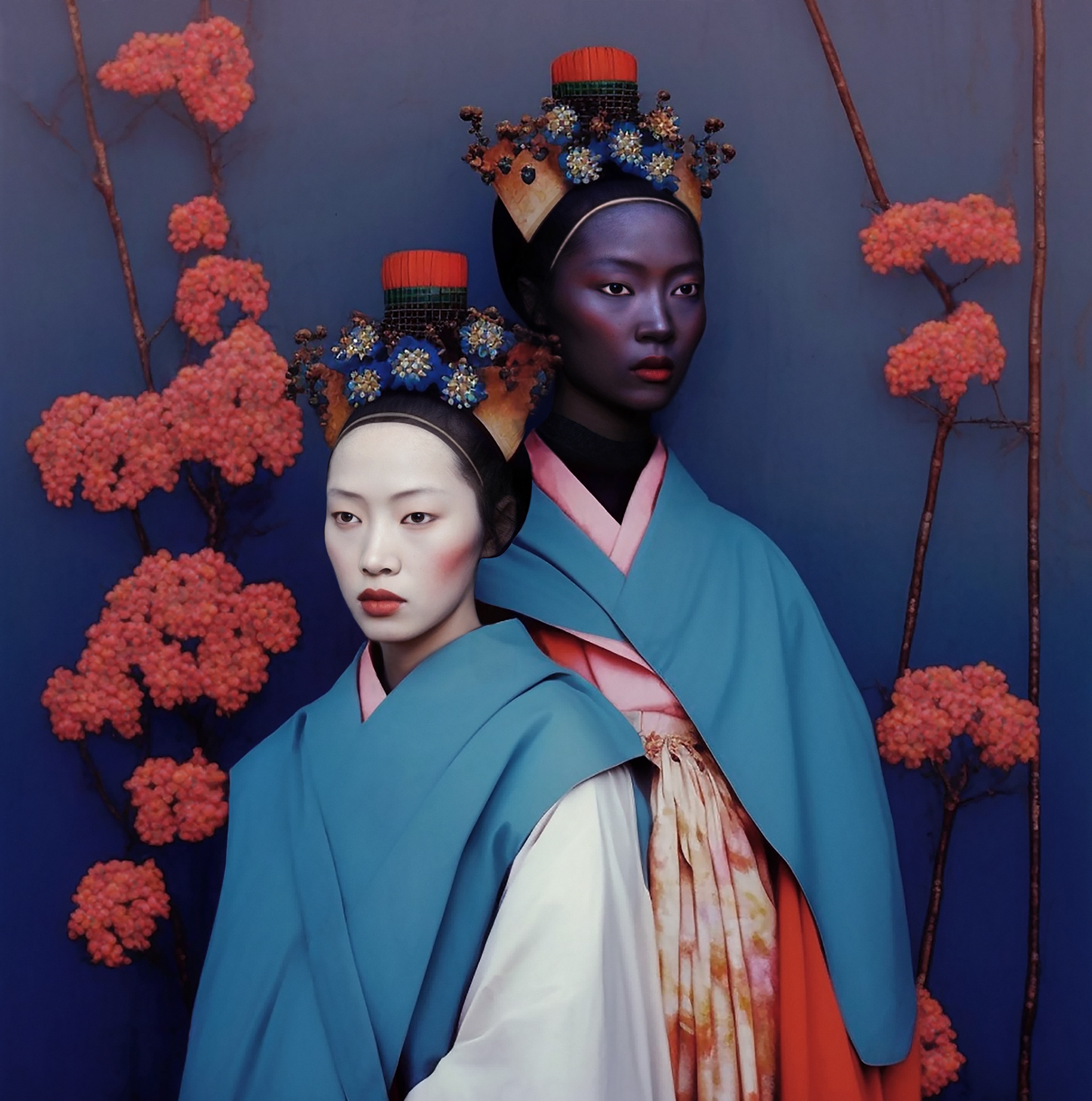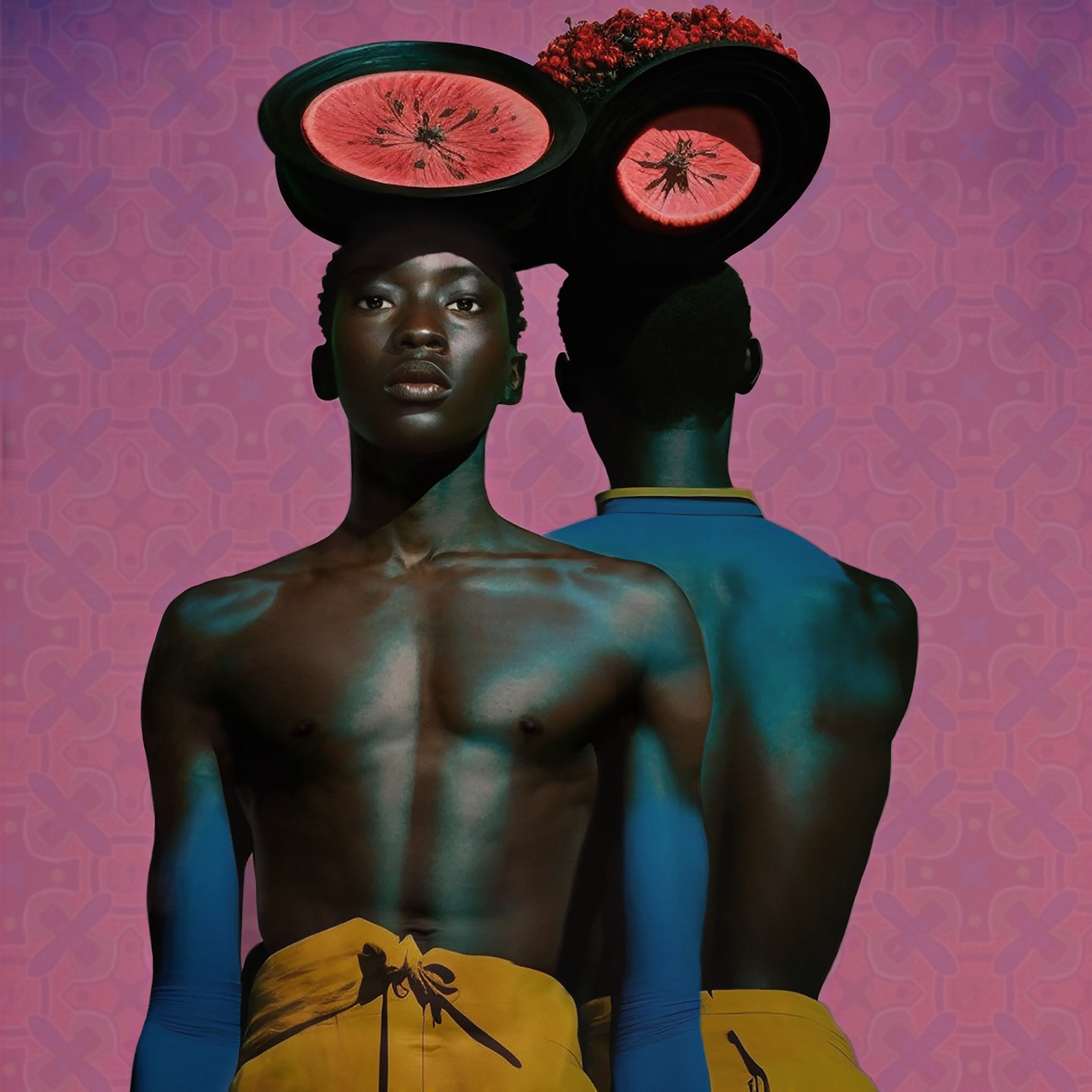Rozemarlin Borkent is a Netherlands-based artist born in 1987. She graduated from the KABK, Royal Academy of Visual Arts in The Hague. Growing up next to the beach, the vast expanse acted as a fresh canvas for her to dream in her own world.
Inspired by the beauty of diversity and different perspectives, her work revolves around creating new beings by combining photos from diverse individuals, old photographs, and Al. Through her work, she aims to immortalize the essence of humanity’s soul. Rozemarlin’s art has been featured in Vogue and exhibited at prestigious events like the PhotoVogue Festival and London Art Biennale. Her creations capture the beauty and complexity of human existence, inviting viewers on a journey of imagination and introspection. Rozemarlin her aim is to portray the incredible diversity of humanity in a beautiful, unique, and dignified way. She wants people to experience the beauty that exists in cultures around the world and to connect with one another through these expressions of human identity.
In “I am that I am,” she showcases the universal beauty that can be found in people from different backgrounds and walks of life. Rather than judging our differences, she believes they should be celebrated as stunning aspects of our shared humanity. To achieve this, she uses digital techniques such as Photoshop, a morphing program, and AI to blend and manipulate images of individuals from entirely different cultures and time periods. The result is a collection of striking portraits that exude an exceptional beauty, almost like iconic representations of human experiences. Beyond the aesthetics, her project carries a deeper message about cultural perception. She wants to raise awareness about how we view and interact with people from different cultures. By shifting our perspectives, we can transform the way we see others and appreciate the richness of diversity. Her art invites you to change the way you look at people, and in doing so, discover transformative changes in the people you look at. “I am that I am” is her way of capturing the essence of humanity and immortalising the soul of our shared experiences. She hopes that through her work, you too can find the beauty of cultures, celebrate our differences, and forge connections that transcend borders and barriers.


The ‘I am that I am’ project conveys a profound message about cultural perception. Can you tell us what messages or emotions you aim to convey to theaudience?
Through my work I hope that people can experience the beauty of diversity in a new way. I would like to celebrate humanty together. I think self-knowledge is very important to understand that we are programmed by our parents, school and society. When we face our prejudices and ask ourselves where they come from, we discover that they do not correspond to how we really think. It is important to keep asking ourselves questions such as “what do I think and why?” and also “how does my opinion contribute to a better way of interacting?” Together we can create a better world. I like that the young generation is often open-minded and grew up with social media that connects us to the whole world, allowing us to see how other people live and see things from their perspective. I have noticed that the older generations are also more open to new ways of thinking. Self-insight and being open and really listening to each other will contribute to a better world. I also think it is important that people can give their own interpretation to my work. Everyone looks differently and I appreciate that.
I believe diversity in art promotes a rich variety of expression, innovation, and inclusivity, allowing for underrepresented voices to be heard and fostering a better understanding and reflection of human experiences. Through this, it challenges perspectives and encourages dialogue, mirroring and propelling societal growth.
Can you walk us through your creative process regarding the techniques used, if I understood correctly, morphing programs, and artificial intelligence, to blend and manipulate images from different cultures and historical periods in the project?
I start with a rough creative vision for the artwork, which is the starting point for my exploratory phase. In this phase I generate dozens of images using AI and select the images that strongly match my idea. In Photoshop I start building with different parts of these images to create a base. I then carefully select elements from antique and contemporary photographs to merge into an expressive portrait. At each stage I manually manipulate the images to refine every detail of my work until I am satisfied with the end result. I see this whole process as painting with photography and AI. My work does not represent the world as it is in reality, but rather as it is in my imagination. There are many elements in my work that show this; time, reality and culture dimensions, mixed media, a fusion of aspects of photography and painting, etc. This results in a layered work in which all these parts come together to form an intriguing image.
“Together, we can embrace the stunning diversity that defines us as human beings and foster empathy and understanding across the world.”


Do you have any future projects you’d like to share?
For my future projects, diversity will play a significant role, and some of my new works will possess a more painterly vibe. I aim to create timeless portraits that showcase the beauty of humanity, exalted to the status of icons. I envision them as iconic digital paintings. There is so much beauty in old Renaissance paintings; I aspire to initiate a new Renaissance that celebrates the diversity of humanity.
For centuries, the conventions of traditional Western art history have limited representation and shaped our perception of portraits.
I want my digital art to chart a new course by incorporating elements from the old masters. For example, in my works Sade and Ming, the lighting is inspired by the illumination found in Vermeer’s paintings. I appreciate Gustav Klimt and the beautiful use of colors in Paul Gauguin’s work. I created a work called Eve and Adam and a portrait of Frida Kahlo. Frida Kahlo was ofcourse one of the most important women in art history. I believe women should play a more prominent role in art and the industry. I admire Krista Kim, a fantastic artist whose work explores the concept of digital consciousness. Her interest in digital technology and its revolutionary effects on human perception, media, social structures, and communication has led her to work in both the digital and physical realms. I am also excited to see Marika Parsadanelli organizing an international group show featuring women’s art during the Venice Biennale.
